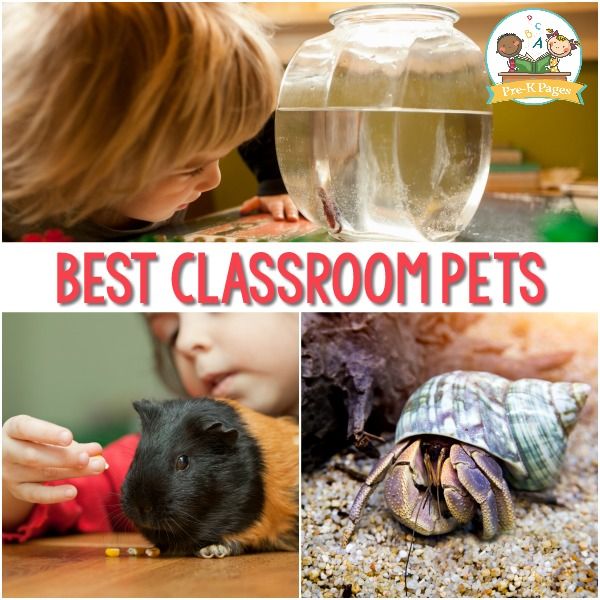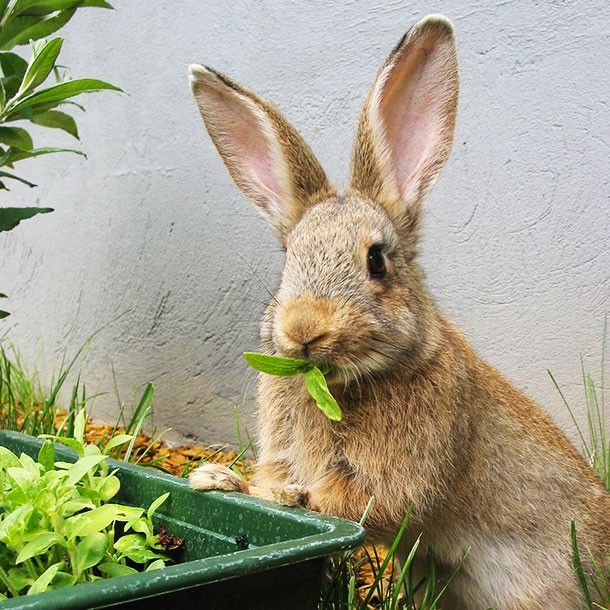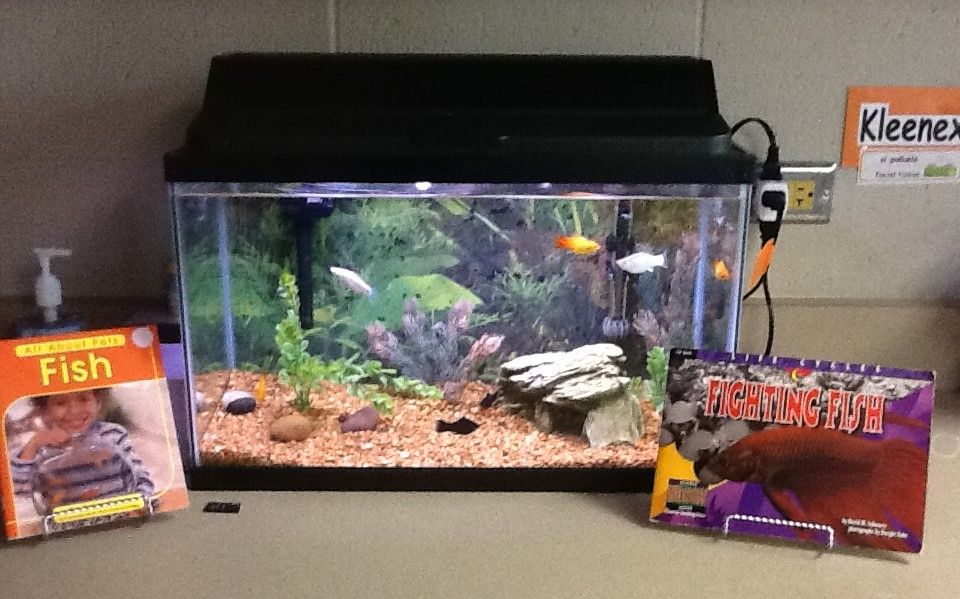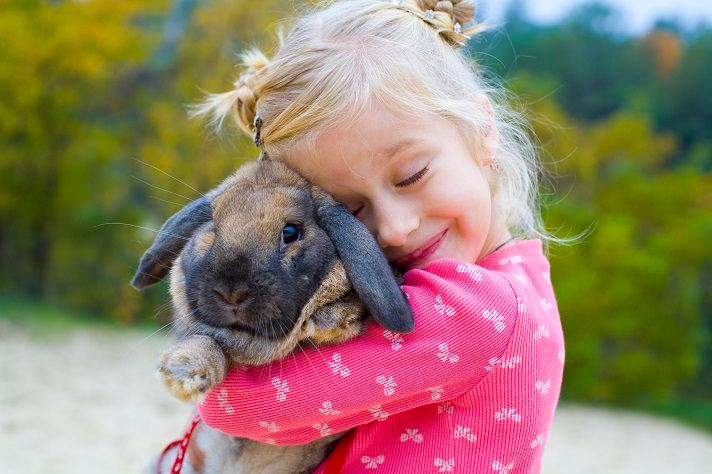5 Options for Choosing a Classroom Pet
 Children love furry (and scaly!) little critters and having a classroom pet can be a great way to help kids grow and develop in so many ways. Pets teach children about responsibility, compassion, and can build a child’s self-esteem. They can also build skills in these areas as well:
Children love furry (and scaly!) little critters and having a classroom pet can be a great way to help kids grow and develop in so many ways. Pets teach children about responsibility, compassion, and can build a child’s self-esteem. They can also build skills in these areas as well:
Science: Children develop science skills by learning about the pet's habitat, behavior, eating & sleeping habits and more.
Math: Children develop math skills by measuring food, water and even the pet!
Language: Children develop language skills by learning new words associated with the pet (words like mammal, reptile, etc.).
Fine & Gross Motor: Children develop fine and gross motor skills while feeding the pet, cleaning their cage or habitat, handling and playing with the pet!
But deciding to introduce an animal to your childcare center or family home childcare can be a big decision. There are many things to consider, including the appropriateness for your classroom as well as the welfare of the animal. Here are some things to consider in your decision:
1. Environment - consider both the classroom environment as well as your local climate. Is your classroom condusive to having an animal? Could the animal survive in your climate? Be sure to reseach the best environment for any animal before making your decision.
2. Care - who would take care of the animal when the facility is closed? How would you handle veterinary costs, especially if the animal gets sick? Is there anything in your center that might pose a risk to a particular type of animal? Are the children old enough to properly handle an animal?
3. Health/Safety - are there any regulations that would prohibit certain animals in your program? Do any of the children or staff have allergies? Would the presence of an animal pose any type of safety concern?
As many of us know from having pets in our homes, animals can be a delight but also require on-going care. It's easy to fall in love with the "cuteness" only to forget about them once the novelty has worn off. Discuss your decision among your staff and consult experts as needed to make the best decision for everyone!
If you’re ready to consider a pet for your classroom, PetMD recommends these animals as being good options:
1. Bearded Dragon
Despite the rather scary-sounding name, Bearded Dragons are gentle by nature. They are named for the spiny skin under their throat that, when puffed up, looks like a beard. Bearded dragons are originally from the desert, so they’ll require a warm and dry habitat (Read PetSmart’s Bearded Dragon Care Guide for more info). According to the website Pets in the Classroom, they will need a few days to adjust to a new environment. Once settled in, students can take it out occasionally for handling sessions. However, like many small animals, bearded dragons are fragile in places. Always supervise students while they are handling a bearded dragon and never allow them to hold the lizard by its tail, since it can break off.
2. Guinea Pigs
Among small mammals, guinea pigs make great classroom pets because of their minimal care requirements. And because they’re larger than hamsters or gerbils, they can be handled more easily, said Dr. Clark Fobian, DVM and president of the American Veterinary Medical Association (AVMA). While they’re easy to care for, guinea pigs do need space to run and often prefer to be in the companionship of another guinea pig of the same gender, according to the website Pets in the Classroom. They’re very social animals and require daily interaction and activity to keep from being bored. Guinea pigs also require a source of vitamin C, so it’s important to provide them with fresh food, Dr. Fobian says.
3. Rabbits
 Like guinea pigs, rabbits are also able to tolerate handling by young children and have minimal care requirements, Dr. Fobian says. They’re intelligent, affectionate, and social, and require daily interaction with people or other rabbits in addition to a large enough habitat to run and exercise comfortably, according to Pets in the Classroom. To prevent boredom and encourage healthy habits, Dr. Fobian recommends making sure hay or a type of grass is included in their feed or provided to them in addition to fresh greens, vegetables, and a high-grade feed.
Like guinea pigs, rabbits are also able to tolerate handling by young children and have minimal care requirements, Dr. Fobian says. They’re intelligent, affectionate, and social, and require daily interaction with people or other rabbits in addition to a large enough habitat to run and exercise comfortably, according to Pets in the Classroom. To prevent boredom and encourage healthy habits, Dr. Fobian recommends making sure hay or a type of grass is included in their feed or provided to them in addition to fresh greens, vegetables, and a high-grade feed.
Rabbits aren't neccessarily for every classroom, though. Some rabbits are more skittish than others and will become defensive when mishandled or overstimulated, which can end in tears for the scratched or bitten child. The House Rabbit Society, a nonprofit rabbit education and rescue organization, has a page of detailed tips and questions for teachers to consider before making the decision.
4. Rats
Though they may not seem like a natural choice for a classroom pet, rats are a favorite among young children for their loving and affectionate nature, Dr. Fobian says. They’re intelligent, with easier care requirements, a better smell, and less of a tendency to bite than their mouse or hamster peers, he adds. Their habitat should be glass, plastic, or metal, with a solid bottom and secure hinges to prevent any escapes, according to Pets in the Classroom. Their diet should include dry food in addition to vegetables and fruits. Broccoli, kale, grapes, and bananas are some good choices, and they should be provided chew sticks to help grind down and maintain the length of their incisor teeth, according to the website.
5. Fish
They aren’t as hands-on as other classroom pets may be, but keeping cold-water fish in the classroom is visually intriguing for young children and can also help teach them responsibility with feeding and water changes, Dr. Fobian says. There is also some evidence that fish are great for relieving stress and anxiety, a plus for fidgety kids. Fish are also great classroom  pets because they can be incorporated into the classroom curriculum, from basic chemistry and biology principles to water quality and environmental lessons, according to Dr. Scott Weese, DVM.
pets because they can be incorporated into the classroom curriculum, from basic chemistry and biology principles to water quality and environmental lessons, according to Dr. Scott Weese, DVM.
The care and maintenance of fish is also very straightforward and simple, an essential aspect of having a classroom pet, Dr. Fobian says. The biggest problem with any pet is their upkeep, including their diet, environment and cleaning. By keeping these requirements to a minimal, educators can simplify the care needs of their classroom pet and allow students to play a more active role in their lives.
Watch this video to learn more about pets in the classroom.
Other Classroom Pet Tips to Keep in Mind
Before bringing any pet into the classroom, teachers should make sure to do their research into the care requirements for the pet, as well as any diseases that may be transferred from the particular animal to people. According to Dr. Fobian, the animal should see a veterinarian yearly, especially before entering a classroom for the first time, to confirm there is no evidence of dental conditions, skin problems, or parasites. He adds that many clinics will check classroom pets at no charge, so educators should talk to their veterinarian about this option to help prevent any issues with their animals.
Once a pet is brought into the classroom, their eating habits, bowel movements, and overall health should be monitored to make sure there are not any issues of illness or discomfort in a classroom environment. Fobian also stresses the importance of having a plan for the animal during summers, holiday breaks, and vacations to make sure that the pet is housed in a suitable environment and cared for properly year-round.
“There are a lot of things an instructor needs to be aware of, and they need to think ahead, particularly with geriatric pets,” says Dr. Fobian. “Make sure they’re in a good environment and know they can be taken care of and come back for the following school year.”
If you've decided a pet is right for your program, consider visiting your local humane society or animal shelter for options on finding your new pet. Even if that shelter doesn't cater to that type of animal, they can often refer you to an appropriate location and may also be able to offer additional guidance to help you make the best decision.
To learn more, check out these great resources:
Animals in Schools and Daycare Settings - CDC
Pets in the Classroom Study - American Humane Society

"Until one has loved an animal, a part of one's soul remains unawakened."
~ Anatole France